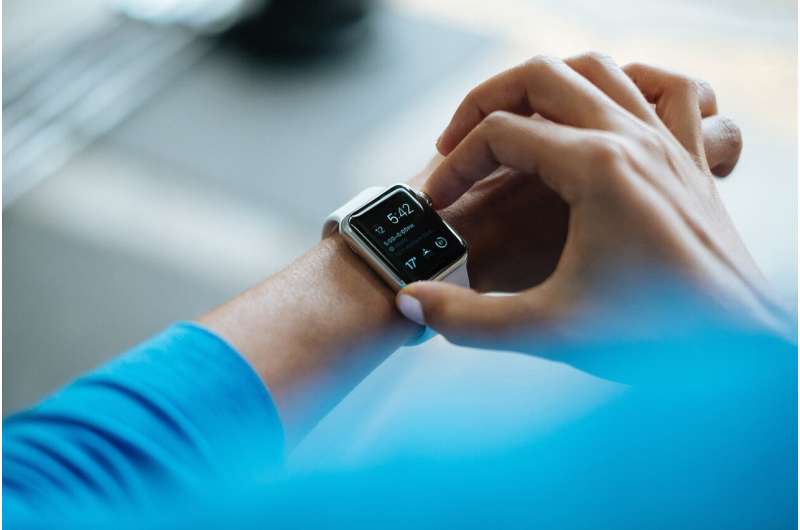This article has been reviewed according to Science X's editorial process and policies. Editors have highlighted the following attributes while ensuring the content's credibility:
fact-checked
peer-reviewed publication
trusted source
proofread
Smartwatch monitoring can trigger timely questions about irregular heartbeats

With an aging population and the growth of outpatient electrocardiographic monitoring enabled by smartwatches and other wearable devices, primary care clinicians will see an increase in patients with premature ventricular contractions (PVCs). PVCs are extra heartbeats that originate from the ventricles, the heart's lower chambers.
A significant percentage of patients who experience PVCs are asymptomatic and the PVCs have little or no clinical implications. However, PVCs can predispose many patients to cardiomyopathy (weakening of the heart muscle), heart failure or sudden cardiac death, or serve as clinical markers of cardiac issues. And there's elevated concern for patients when they view these irregularities on their smartwatches and other mobile ECG devices.
A review in Mayo Clinic Proceedings provides an overview of the appropriate testing for PVCs, as well as management and prognostic considerations necessary when faced with PVCs in the outpatient clinic. The article offers basic treatment strategies and indications of when to refer patients for cardiovascular specialty consultation to improve physician comfort and enhance patient care.
"PVCs are extremely common in the general population, and most require little or no further work-up or testing," says the article's senior author, Christopher DeSimone, M.D., Ph.D. "For clinicians, it's important to be able to distinguish between those that are symptomatic or cause for concern, and those that are not, to avoid unnecessary testing and to provide the best treatment or simply reassurance to patients."
Clinicians should be attuned to symptomatic PVCs or high-risk PVC features, which include family history of sudden death, cardiogenic or unexplained fainting, and signs and symptoms of heart failure, Dr. DeSimone says.
The article includes these points:
- Most PVCs, especially at low burden (fewer than 10% of heartbeats), are asymptomatic in 50%-75% of patients.
- For those in whom symptoms develop, common symptoms are skipped beats, palpitations and prominent heartbeats with a pounding sensation. In more significant cases, patients may report fatigue, dizziness or heart failure symptoms.
- Patients with frequent PVCs are often concerned about their capacity for exercise and should be reassured that it's safe and beneficial to exercise.
"The availability of wearable technology to detect health concerns is leading to amazing advances in patient care," says Dr. DeSimone. "We are witnessing a paradigm shift in diagnostic techniques, with major advances in artificial intelligence and wearable technology to detect arrhythmias. These new technologies lead to more patients identified with PVCs and have value for clinicians, but technology should always remain an adjunct or tool, not a replacement for clinical judgment."
More information: Andrew S. Tseng et al, Management of Premature Ventricular Complexes in the Outpatient Setting, Mayo Clinic Proceedings (2023). DOI: 10.1016/j.mayocp.2023.01.021





















